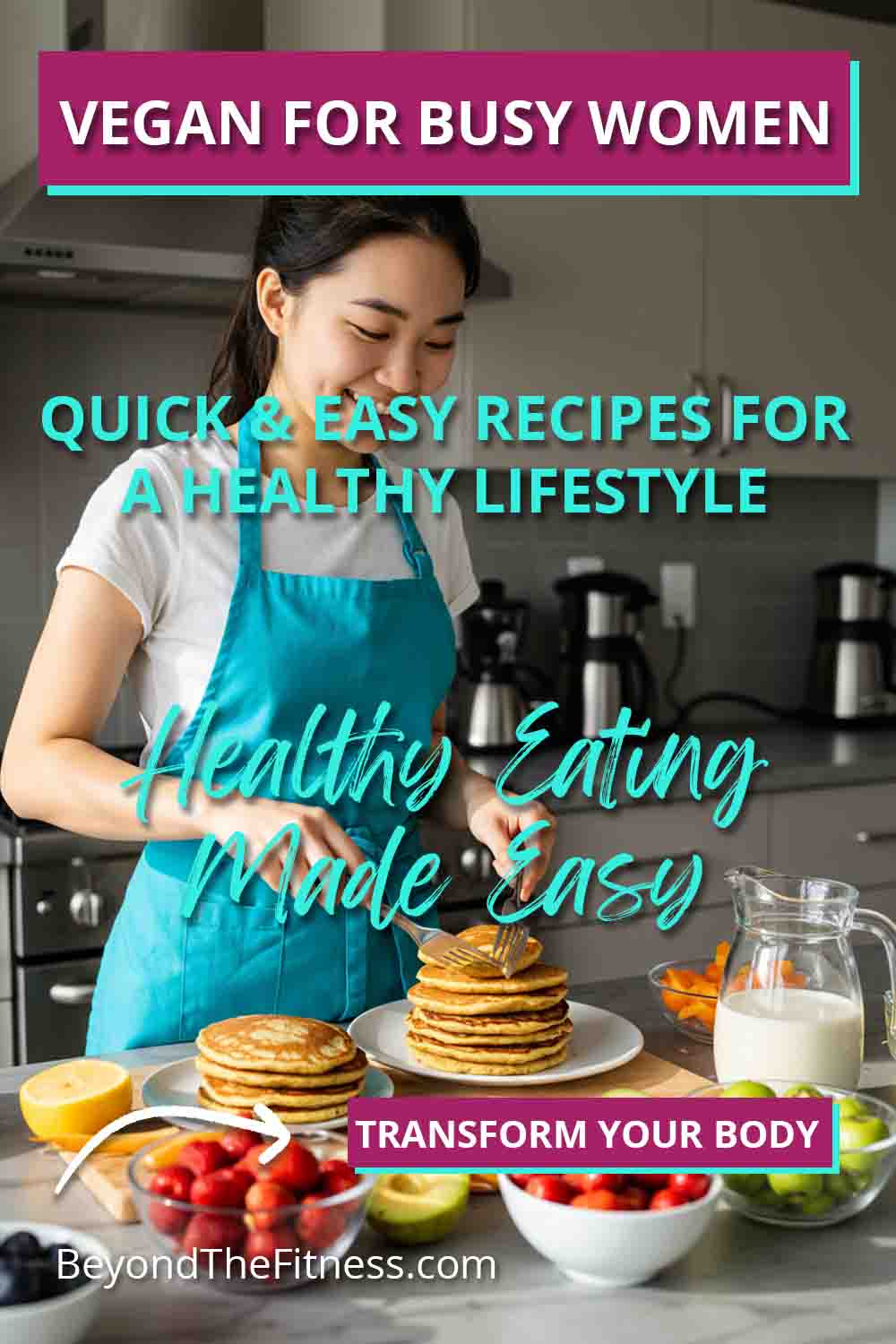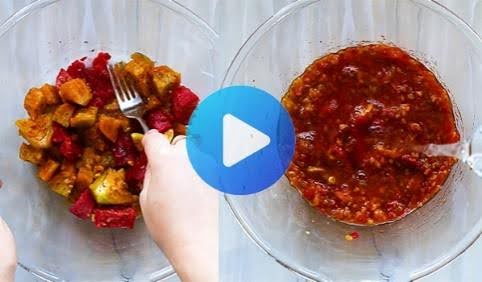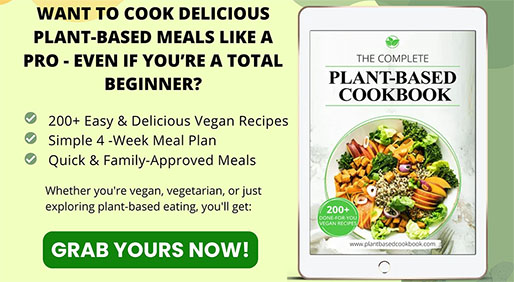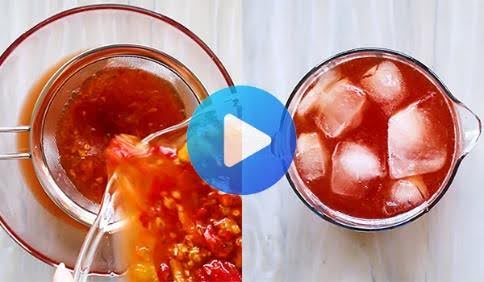Being a busy woman today often feels like juggling a dozen things at once. Between work, family, social life, and trying to squeeze in some time for yourself, finding the energy and time to focus on healthy eating can seem like another impossible task. If you’re following or considering a vegan lifestyle, it might feel even more complicated. I get it. As someone who works closely with women on their fitness and weight loss journeys, I hear this all the time. Many worry that vegan eating means spending hours in the kitchen or searching for hard-to-find ingredients.
But I’m here to tell you that eating a healthy vegan diet doesn’t have to be difficult or time-consuming. In fact, it can be simple, delicious, and incredibly rewarding, especially when you have the right strategies and recipes. It’s entirely possible to fuel your body with vibrant, plant-based foods that support your health, energy levels, and fitness goals, even on the busiest of days. Let’s explore how you can make a vegan lifestyle work for you, focusing on quick, easy meals that fit seamlessly into your packed schedule.
Insider Tip: Enjoying Healthy and Flavorful Plant-Based Dishes with The Complete Plant Based Recipe Cookbook
Why Choose Veganism? Health Perks for Women
Making the switch to a vegan diet, or even just incorporating more plant-based meals, can offer some wonderful health advantages specifically for women. It’s not just about avoiding animal products; it’s about embracing a way of eating that’s naturally rich in vitamins, minerals, fiber, and beneficial plant compounds.
- Hormone Harmony: Plant-based diets can play a role in balancing hormones. Foods rich in fiber and certain phytonutrients (plant nutrients) can help regulate estrogen levels. This might be helpful for managing symptoms related to the menstrual cycle or menopause. Think about foods like flaxseeds, soy (like tofu and edamame), and lots of fruits and vegetables.
- Energy Boost: Feeling tired is a common complaint I hear. A well-planned vegan diet, packed with complex carbohydrates (like whole grains, beans, and starchy vegetables), provides sustained energy release. Unlike sugary snacks or heavy meals that can lead to energy crashes, plant foods offer fuel that lasts, helping you power through your demanding day.
- Weight Management Support: Plant-based diets are often naturally lower in calories and saturated fat compared to diets high in animal products. They are also typically very high in fiber. Fiber is amazing because it helps you feel full and satisfied after eating, which can prevent overeating. This combination makes a vegan diet a powerful tool if weight management is one of your goals. It’s about nourishing your body, not depriving it.
- Heart Health: Heart disease is a significant health concern for women. Vegan diets, being free of dietary cholesterol and generally low in saturated fat, are excellent for heart health. Plus, they are rich in things like potassium, fiber, and antioxidants, all known to support healthy blood pressure and cholesterol levels.
- Gut Health: Your gut is like a second brain, influencing everything from digestion to mood to immunity. Vegan diets, loaded with fiber from fruits, vegetables, legumes, and whole grains, feed the good bacteria in your gut. A healthy gut microbiome is linked to better overall health and well-being.
It’s important to remember that these benefits come from a well-planned vegan diet. Just cutting out animal products isn’t enough; you need to focus on eating a variety of whole, plant-based foods.
Getting the Nutrients You Need: Vegan Edition
One common concern about vegan diets is getting enough of certain key nutrients. This is a valid point, but with a little knowledge and planning, it’s entirely manageable. As women, we have specific nutritional needs, especially related to energy, bone health, and blood health.
- Iron: Iron is crucial for carrying oxygen in your blood and preventing fatigue. Women, particularly during their reproductive years, need more iron. Great vegan sources include lentils, chickpeas, beans, tofu, cashew nuts, chia seeds, ground linseed, hemp seeds, pumpkin seeds, kale, dried apricots and figs, raisins, quinoa, and fortified breakfast cereal. Here’s a tip: Eat iron-rich foods with vitamin C sources (like oranges, bell peppers, strawberries, or broccoli) to boost absorption. Avoid drinking tea or coffee with meals, as they can hinder iron uptake.
- Vitamin B12: This vitamin is essential for nerve function and making red blood cells. Vitamin B12 is primarily found in animal products, so this is one nutrient vegans must pay attention to. You won’t reliably get enough from plant foods alone. The best way to get B12 is through fortified foods (like some plant milks, nutritional yeast, breakfast cereals) and a B12 supplement. I strongly recommend all vegans supplement with B12.
- Calcium: We all know calcium is vital for strong bones. While dairy is a well-known source, there are plenty of plant-based options. Good sources include fortified plant milks and yogurts, calcium-set tofu, green leafy vegetables (like kale, bok choy, broccoli – but note spinach isn’t a great source due to oxalates), almonds, tahini (sesame seed paste), and dried figs.
- Vitamin D: Vitamin D works with calcium to keep bones healthy, and it also plays a role in immune function. Our bodies make vitamin D from sunlight, but factors like location (hello, Canadian winters), skin tone, and sunscreen use can limit production. Food sources are limited, even for non-vegans. Look for fortified foods like plant milks, some mushrooms exposed to UV light, and fortified cereals. Many people, vegan or not, benefit from a vitamin D supplement, especially during darker months.
- Omega-3 Fatty Acids: These fats are important for brain health, heart health, and reducing inflammation. The most potent forms (EPA and DHA) are mainly found in fatty fish. However, your body can convert ALA, an omega-3 found in plants, into EPA and DHA, although the conversion rate can be low. Good sources of ALA include flaxseeds (ground is best), chia seeds, hemp seeds and oil, and walnuts. Some people choose to take an algae-based EPA/DHA supplement for a direct source.
- Protein: Protein is essential for building and repairing tissues, including muscle – very important if you’re active. There’s a myth that it’s hard to get enough protein on a vegan diet, but that’s simply not true. Excellent sources include lentils, beans, chickpeas, tofu, tempeh, edamame, nutritional yeast, nuts, seeds, quinoa, and even whole grains and vegetables contribute. Aim to include a good protein source in each meal.
Focusing on variety is key. Eating a wide range of plant foods helps ensure you’re covering your nutritional bases.
Tackling the Time Crunch: Veganism for the Busy Bee
Okay, let’s talk about the reality of a packed schedule. How do you fit healthy vegan eating into a life that feels like it’s constantly on fast-forward? It’s all about working smarter, not harder.
- Meal Prepping Power: This is my number one tip. Dedicate an hour or two on the weekend (or whenever works for you) to prep components for the week’s meals. This could mean:
- Cooking a big batch of grains like quinoa or brown rice.
- Roasting a tray of mixed vegetables.
- Washing and chopping veggies for salads or stir-fries.
- Making a large batch of lentil soup or chili.
- Whipping up some hummus or another dip.
- Portioning out nuts and seeds for snacks.Having these components ready makes assembling meals during the week incredibly fast.
- Batch Cooking Brilliance: Cook double or triple portions of dinner. Leftovers make fantastic lunches the next day, saving you time and effort. Soups, stews, curries, and grain bowls are perfect for batch cooking.
- Smart Grocery Shopping: Go shopping with a list based on your meal plan (even a loose one). Stock your pantry with staples like canned beans, lentils, diced tomatoes, whole grains, pasta, nuts, seeds, and spices. Keep your freezer stocked with frozen fruits (great for smoothies) and vegetables (just as nutritious as fresh, and often cheaper and more convenient).
- Embrace Simplicity: Not every meal needs to be a gourmet creation. Simple meals can be incredibly nutritious and satisfying. Think a baked sweet potato topped with black beans and salsa, or whole-wheat pasta with marinara sauce and lentils, or a quick tofu scramble.
- One-Pan Wonders: Sheet pan meals and one-pot pastas are lifesavers. Toss chopped veggies, chickpeas or tofu, and seasonings onto a baking sheet and roast. Or cook pasta, sauce, and veggies all in one pot. Minimal cleanup is a huge bonus.
Quick & Easy Vegan Breakfasts to Start Strong
Breakfast sets the tone for your day. You need something quick that provides lasting energy.
- Super Smoothies: Smoothies are the ultimate fast breakfast. Blend plant-based milk (soy, almond, oat), a scoop of vegan protein powder (optional, but great for satiety and muscle support), a handful of spinach (you won’t taste it), frozen fruit (like berries or banana), and a source of healthy fat like chia seeds or almond butter. You can even prep smoothie packs (fruit, greens, seeds) in freezer bags – just add liquid and blend.
- Overnight Oats: Combine rolled oats, plant milk, chia seeds, and a touch of maple syrup (optional) in a jar. Add fruit, nuts, or seeds if you like. Stir, cover, and refrigerate overnight. In the morning, grab and go. It’s filling, fiber-rich, and requires zero morning prep.
- Speedy Tofu Scramble: Crumble firm tofu into a non-stick pan with a little oil or water. Add turmeric (for color), black salt (kala namak, for an eggy flavor, optional), nutritional yeast (for cheesy flavor), and your favorite spices. Sauté for 5-7 minutes, tossing in some spinach or chopped veggies if you have them. Serve on toast or on its own. It’s packed with protein.
- Whole-Grain Toast with Toppings: Don’t underestimate toast. Choose a good quality whole-grain bread. Top with mashed avocado and everything bagel seasoning, peanut butter and banana slices, hummus and cucumber, or almond butter and berries. Quick, easy, and versatile.
Speedy Vegan Lunches That Keep You Going
Midday meals need to be convenient, especially if you’re packing lunch for work, but also substantial enough to avoid that afternoon slump.
- Salad in a Jar: Layer your salad ingredients in a mason jar: dressing at the bottom, followed by hard veggies (carrots, cucumbers, peppers), then grains or beans (quinoa, chickpeas), then softer veggies or fruits (tomatoes, avocado), and finally leafy greens at the top. When ready to eat, shake it up. Everything stays fresh and doesn’t get soggy.
- Hearty Wraps: Spread hummus or vegan cream cheese on a whole-wheat tortilla. Fill with pre-cooked lentils or beans, shredded carrots, spinach, cucumber, and maybe some baked tofu strips or falafel. Roll it up tightly. Easy to eat on the go.
- Quick Grain Bowls: Use your pre-cooked grains as a base. Top with canned beans or lentils (rinsed), leftover roasted veggies, chopped fresh veggies, a sprinkle of seeds, and a simple dressing (like tahini-lemon or vinaigrette). Balanced and satisfying.
- Thermos Soups and Stews: Make a big batch of lentil soup, black bean soup, or vegetable chili on the weekend. Heat it up in the morning and pack it in a thermos. A warm, comforting lunch ready in minutes.
Simple Vegan Dinner Solutions for Busy Evenings
After a long day, you want dinner to be fast and comforting, but still healthy.
- Stir-Fry Magic: Stir-fries are incredibly fast. Sauté chopped veggies (broccoli, peppers, onions, mushrooms, snow peas – use frozen to save time) with cubed tofu or tempeh. Add a simple sauce made from soy sauce (or tamari), ginger, garlic, and a touch of maple syrup or rice vinegar. Serve over pre-cooked rice or quinoa. Dinner in 15-20 minutes.
- Pasta Power: Cook whole-wheat pasta. While it’s cooking, heat up a jar of marinara sauce and stir in a can of lentils or white beans for extra protein and fiber. Toss with the cooked pasta. Add some nutritional yeast for a cheesy flavor. You can add frozen spinach or peas to the sauce too.
- Sheet Pan Suppers: Toss chickpeas or cubed tofu with chopped vegetables (like broccoli, sweet potatoes, Brussels sprouts, onions), toss with oil and seasonings (paprika, garlic powder, oregano), and roast on a sheet pan at around 400°F (200°C) until tender and slightly browned (usually 25-35 minutes). Minimal effort, maximum flavor, one pan to wash.
- Lentil Shepherd’s Pie (Quick Version): Sauté onions, carrots, and celery. Add brown or green lentils, vegetable broth, and seasonings (like thyme and rosemary). Simmer until lentils are soft. Top with pre-made mashed potatoes (or quick mashed sweet potatoes). A comforting meal with minimal hands-on time if you use pre-chopped veggies.
Healthy Vegan Snacks for Energy On-the-Go
Snacks bridge the gap between meals, keeping hunger pangs at bay and energy levels stable. Choose snacks that provide nutrients, not just empty calories.
- Fruit and Nut Butter: An apple or banana with a tablespoon of peanut or almond butter is a classic for a reason. It provides carbs, fiber, and healthy fats.
- Nuts and Seeds: A small handful of almonds, walnuts, pumpkin seeds, or sunflower seeds offers protein, healthy fats, and minerals. Keep pre-portioned bags handy.
- Roasted Chickpeas: Drain and rinse a can of chickpeas. Toss with a little oil and your favorite spices (cumin, chili powder, garlic powder). Roast at 400°F (200°C) until crispy (about 20-30 minutes). A crunchy, savory, protein-packed snack.
- Veggie Sticks and Hummus: Pre-chop carrots, celery, bell peppers, and cucumbers. Pair with store-bought or homemade hummus for a fiber-rich, satisfying snack.
- Edamame: Buy frozen edamame (in pods or shelled). Steam or microwave until tender. Sprinkle with a little sea salt. A great source of protein and fiber.
- Vegan Yogurt with Berries: Choose a fortified soy or coconut yogurt and top with fresh or frozen berries.
Fueling Your Fitness: Vegan Style
If you’re active, your nutrition needs are even more important. A vegan diet can absolutely support athletic performance and recovery.
- Pre-Workout: Aim for easily digestible carbohydrates about 1-2 hours before exercise for energy. A banana, a small bowl of oatmeal, or a few dates work well. Avoid high-fat or high-fiber foods right before a workout, as they can cause digestive discomfort.
- Post-Workout: Focus on replenishing glycogen stores (energy stored in muscles) and repairing muscle tissue. Aim for a combination of carbohydrates and protein within an hour or two after your workout. A smoothie with plant-based protein powder, fruit, and plant milk is ideal. Other options include tofu scramble on toast, lentil soup, or a grain bowl with beans.
- Hydration: Don’t forget water. Staying hydrated is crucial for energy, performance, and overall health. Carry a water bottle with you throughout the day.
These quick and easy vegan meals are perfect for supporting an active lifestyle, providing the energy you need to exercise and the nutrients required for recovery.
Vegan Eating and Managing Your Weight
Many women I work with are interested in how a vegan diet can help with weight management. As I mentioned earlier, plant-based diets are often lower in calories and higher in fiber, which promotes fullness. But it’s more than just that.
- Nutrient Density: Whole plant foods are packed with nutrients relative to their calorie content. This means you can eat satisfying portions and nourish your body without consuming excess calories.
- Mindful Eating: Focusing on whole foods often encourages more mindful eating. You tend to pay more attention to your body’s hunger and fullness cues.
- Sustainable Approach: A vegan diet based on the simple, enjoyable recipes we’ve discussed feels less like a restrictive “diet” and more like a sustainable lifestyle change. This is key for long-term weight management. It’s not about quick fixes, but about building healthy habits.
Remember, weight management is also influenced by factors like activity level, sleep, and stress management. A healthy vegan diet is one powerful piece of the puzzle.
Making It Stick: Tips for Long-Term Success
Switching to or maintaining a vegan lifestyle when you’re busy requires consistency. Here are a few tips:
- Start Small: If you’re new to veganism, you don’t have to change everything overnight. Try incorporating one vegan meal a day, or making one day a week fully vegan (like Meatless Mondays). Gradually add more as you feel comfortable.
- Find Your Go-To Meals: Identify 5-10 super simple vegan meals that you enjoy and can make quickly. Having these in your back pocket prevents decision fatigue on busy nights.
- Communicate: If you live with others, talk to them about your dietary choices. Find meals you can enjoy together or simple ways to adapt family favorites.
- Don’t Aim for Perfection: Life happens. There might be days when your meals aren’t perfectly balanced or you grab something less than ideal on the run. That’s okay. Focus on overall patterns rather than striving for unattainable perfection. Just get back on track with your next meal.
- Keep Learning: Explore new recipes, try different vegetables or grains, and stay curious. There are tons of amazing vegan resources online and in cookbooks.
Diving Deeper: A Few Simple Recipe Ideas
Let’s flesh out a couple of those quick meal ideas.
1. Speedy Chickpea Salad Sandwich Filling
This takes about 10 minutes and is great for lunches.
- Ingredients:
- 1 can (15 oz) chickpeas, rinsed and drained
- 2-3 tablespoons vegan mayonnaise
- 1 tablespoon Dijon mustard
- 1/4 cup finely chopped celery
- 2 tablespoons finely chopped red onion or scallions
- 1 tablespoon chopped fresh dill or parsley (optional)
- Salt and black pepper to taste
- Instructions:
- In a medium bowl, mash the chickpeas with a fork or potato masher until mostly broken down but still slightly chunky.
- Add the vegan mayonnaise, Dijon mustard, celery, red onion, and herbs (if using).
- Stir everything together until well combined.
- Season with salt and pepper to your liking.
- Serve on whole-grain bread, in a wrap, with crackers, or over lettuce leaves. Store leftovers in the fridge for 2-3 days.
2. 20-Minute Peanut Noodles with Tofu & Broccoli
A satisfying and quick dinner.
You Might Be Interested In: Exploring Delicious Vegan Recipes With This Cookbook
- Ingredients:
- 8 oz whole-wheat spaghetti or linguine
- 1 tablespoon sesame oil or vegetable oil
- 1 block (14 oz) extra-firm tofu, pressed and cubed
- 1 head of broccoli, cut into small florets (or use frozen)
- For the Sauce:
- 1/4 cup peanut butter (creamy or crunchy)
- 1/4 cup warm water
- 2 tablespoons soy sauce or tamari
- 1 tablespoon maple syrup or agave nectar
- 1 tablespoon rice vinegar
- 1 teaspoon grated fresh ginger (or 1/2 tsp ground ginger)
- 1 clove garlic, minced (or 1/2 tsp garlic powder)
- Optional: Sriracha or red pepper flakes to taste
- Instructions:
- Cook pasta according to package directions. Add the broccoli florets to the boiling water during the last 3-4 minutes of cooking. Drain pasta and broccoli, reserving about 1/2 cup of pasta water.
- While pasta cooks, heat oil in a large skillet or wok over medium-high heat. Add cubed tofu and cook, stirring occasionally, until golden brown on most sides (about 5-7 minutes).
- While tofu cooks, whisk together all sauce ingredients (peanut butter, warm water, soy sauce, maple syrup, rice vinegar, ginger, garlic, optional spice) in a bowl until smooth. If the sauce is too thick, add a tablespoon or two of the reserved pasta water.
- Add the cooked pasta and broccoli to the skillet with the tofu. Pour the peanut sauce over everything.
- Toss well to coat everything evenly. Cook for another 1-2 minutes until heated through.
- Serve immediately. Garnish with chopped peanuts or scallions if desired.
These are just examples – the possibilities for quick, easy, and delicious vegan meals are truly endless. It’s about finding simple formulas and flavors that you love and that fit into your busy life. Eating vegan can be a vibrant, energizing way to support your health and fitness goals, without adding stress to your schedule.
Related YouTube Video
Final Thoughts
Making healthy choices, especially when adopting a vegan lifestyle, doesn’t need to be another source of stress in your already busy life. By focusing on simple preparation methods, stocking your kitchen smartly, and embracing easy recipes, you can enjoy delicious, nourishing plant-based meals every day. Remember that consistency is more important than perfection. Find meals you genuinely enjoy, make small sustainable changes, and be patient with yourself. Fueling your body well is a form of self-care, and it’s absolutely achievable, even with a packed schedule. You’ve got this.







